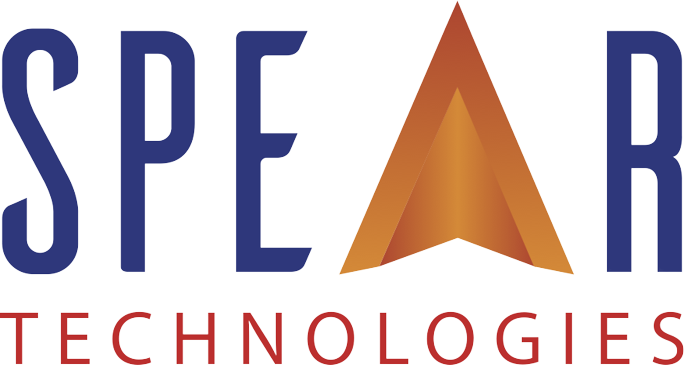Get Smart with AI – The Low-Code / No-Code Way

By Jose Tribuzio, Co-founder and CEO, Spear Technologies
Jose Tribuzio – For as long as I can remember, workers’ comp claims organizations have wanted to be able to gaze into technology’s crystal ball and make predictions. What claims will be fraudulent? Which ones have a high propensity for litigation? What claims should be earmarked for subrogation?
There’s no doubt that these types of predictions, when made accurately, would save significant costs for workers’ compensation programs. Payers would be able to identify these “exceptional” claims early and get ahead of worst-case scenarios by proactively intervening and shepherding claims down a strategically managed, less costly path.
What’s great is that today AI has even more applications—beyond enabling this type of exception-based management. For example, AI can be trained to automate some of your most labor-intensive processes, including document processing and customer service. There are many uses and benefits of AI, but how can claims organizations take advantage of these advancements without significant effort, expertise, and disruption?
Last week, we spoke about the benefits of low-code / no-code platforms and the advantages they can provide to claims automation. What we didn’t cover was how these platforms can also make it easier for organizations to get smart with AI capabilities.
Prebuilt AI Models
Previously, to leverage AI, claims organizations either had to find a specialized AI vendor that could provide the types of predictive models their teams needed, or they had to have the data science expertise in-house to build the models themselves.
But consider this: with a low-code / no-code platform, you don’t have to buy or build models because they’re already prebuilt and available within the platform ecosystem. A lot of the heavy lifting is already done. Organizations simply need to configure the prebuilt models to meet their needs, and with a little training, a model could be up and running in a short time.
It’s so easy that business users can be trained to do it—which is why we referred to these users as “citizen developers” in last week’s column. The users would log onto a low-code / no-code platform, and using a wizard-like toolkit, select “Prediction” as the type of model they want to configure and designate the data tables they want to use. The tool guides them step-by-step through the process. And when it’s done, the model works, and these users didn’t need to learn code or wait for IT to develop the model for them.
Efficient AI Output & Optimization
Let’s say your organization designed a model to forecast whether claims would be litigated.
In the previous way of doing things, you’d receive an output—typically a list of claims; each with a score indicating its likelihood of litigation. You’d have to perform the extra leg work of importing that output back into your claims system—and you’d have the extra step of programming actions against that output. This programming would probably require time from your IT department.
But with the low-code / no-code way, predictive scores are generated within the platform ecosystem. As a result, the output is readily available to trigger the next step in your process. You can more immediately display the results in a dashboard, or you could “clicks not code” your way into a workflow using those scores. For example, if a litigated score is 80 or higher, you might configure the system to send the claim to a litigation expert to review and take action. As a result, acting on the model’s predictive output is more efficient and instantaneous.
The more sophisticated your data model or the more claims data you provide it, the more accurate it becomes at spotting exceptions, like claims with a high chance of litigation. So, if your claims organization wants to utilize a specialized AI vendor to leverage aggregated claims data to better train your model, the platform has ready-made API connectors to make that integration happen with ease.
Streamlining Time-Consuming Document Processing
As I mentioned, AI has a lot of applications beyond exception management. Juniper Research estimates that AI could drive savings up to $2.3 billion by 2024 for the insurance industry.
One area where we’ve seen AI have a tremendous impact in reducing costs is in the handling of incoming paperwork. Intelligent document processing utilizes AI to automatically capture, classify, and extract data. It can be applied across claims organizations to handle different types of documents, including first reports of injury, medical test results, etc.
The AI model requires about four to five of the exact same form to train itself. It learns where all the fields are and extracts key data—which it then uses to populate the claims system. This saves time in data entry. But the data can also be used to drive processes, and scanned forms can be attached to relevant claims for documentation.
Claim departments can dramatically reduce mailroom operations because they can use this feature to streamline the handling of invoices and medical bills. Using document recognition and data extraction in the manner described above will enable data from invoices to trigger workflows like automatically making payments or recalculating reserves.
AI Converts Freeform Text into Actionable Information for Improved Customer Service
Another application of AI that’s gaining ground is the ability to analyze freeform text. In the past, personnel had to read through and analyze large amounts of information, which was monotonous, time-consuming, and costly. In some cases, critical information could be missed.
Now, AI can sort through this data, pinpointing key kernels of information. For example, it can sort through text and classify information into specific categories, such as “customer feedback” or “invoicing issues.” AI can also detect key phrases, such as “my new wheelchair has not arrived,” so adjusters can address the issues behind these phrases, such as equipment delays. Or it could recognize text related to certain predefined entities, such as testing facilities or pharmacy benefit (PBM) issues.
All the text in a claims system can be analyzed without manual intervention. Perhaps one of my favorite applications is AI’s ability to determine sentiment. For example, a claims organization could use this capability to go through thousands of incoming emails from claimants. Using natural language analysis, AI would determine whether a claimant’s sentiment is positive, negative or neutral.
With sentiment analysis, strong negative or positive feedback can be promptly identified and routed to an adjuster for review. This helps claims organizations learn what’s making injured workers happy or frustrated, so they can improve service. Maybe an injured worker is having a negative experience with a treating physician. This could potentially delay treatment. When this is brought to the attention of adjusters, they can step in. Perhaps they can get the injured worker assigned to another provider or notify the nurse case manager if one has been assigned to the claim.
With AI’s assistance on these types of text-based situations, adjusters can intervene when needed to help claimants stay on track toward recovery and return to work.
Leveraging AI into the Future
As the economy as a whole continues to modernize, workers’ comp stakeholders, likewise, will come to expect the same level of speed, seamless transactions, and smooth service they receive in other industries. Workers’ comp is on the precipice of being able to facilitate amazing changes with AI. A big hurdle is knowing how to get there. One way is to leverage the pre-built AI models afforded by low-code / no-code platforms. This approach enables organizations to take a step forward without getting overwhelmed about how to get started.
In this article, we covered just a few ways AI advances can help, e.g., providing predictive models to identify exceptions—including fraud, litigation, and subrogation; offering intelligent document processing to streamline operations, and conducting freeform text analysis to support superior customer service.
With these functions, AI has the potential to enhance efficiency, costs savings, and claimant experience. At the same time, claims organizations will be able to lighten workloads and assign claims staff to more value-added tasks, translating into happier, more satisfied team members. And over time, the intelligence and learning capabilities of AI will only improve and become more robust, offering the industry even more advantages.
About Jose Tribuzio
Jose Tribuzio is the co-founder and CEO at Spear Technologies. He has a track record of developing innovative technology solutions for the workers’ compensation and broader property and casualty market. His years of experience in this space led to his realization that a new approach was needed to take insurance core systems to the next level. Jose has implemented large and complex solutions for insurance and claims organizations. He is also an avid and accomplished spear fisherman. Because this endeavor involves pinpointing and capturing targets, he decided it was a good name for the company.
About Spear Technologies
Spear Technologies aims to provide property and casualty insurance companies with an enterprise claims management system for the future. Developed on the Microsoft Power Platform, SpearClaims delivers unparalleled control, speed, and results. By leveraging this low-code / no-code development platform, Spear Technologies empowers companies with the ability to easily and quickly configure and tailor SpearClaims to meet their unique needs. SpearClaims’ architecture provides the capabilities for using built-in AI and automation tools to extend capabilities for differentiation and results. For more information, visit www.spear-tech.com.



